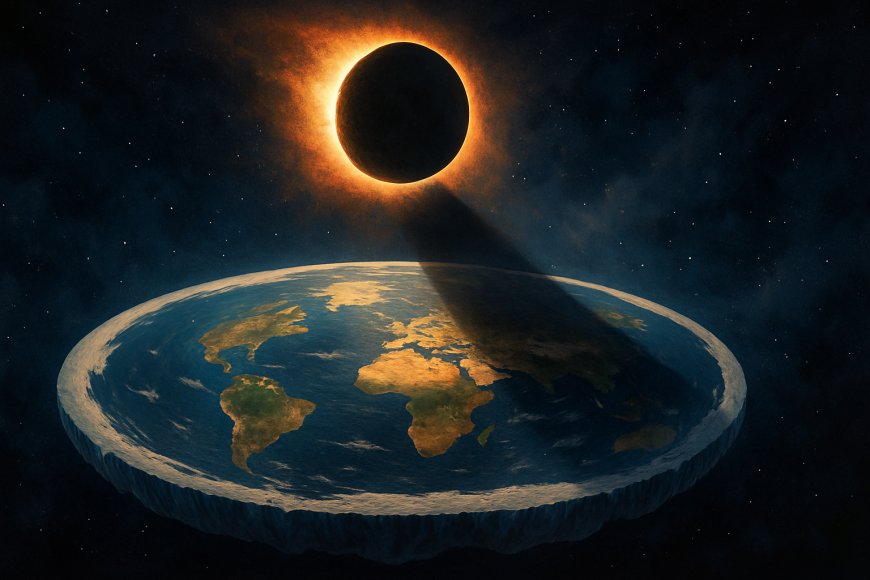Shadowgate: The Lunar Eclipse That Shattered the Globe Model
A shocking look at how lunar eclipses break the globe model. This article exposes the selenelion paradox—when the Sun and Moon are both visible during an eclipse—and explores the hidden "shadow object" theory. If Earth isn’t casting the shadow, what is?

EARTH SKY — For decades, we’ve been told lunar eclipses occur when the Earth blocks sunlight from hitting the Moon. But what happens when the Sun and Moon are both visible in the sky during an eclipse?
They call it a “selenelion”... but Flat Earthers call it checkmate.
🌘 The Selenelion Paradox
On multiple documented occasions, observers have witnessed the Sun rising in the east while the Moon—supposedly in Earth’s shadow—is setting in the west. According to the globe model, this shouldn’t be possible. Earth can’t be between the Sun and Moon if both are visible above the horizon.
Yet it happens. And mainstream science handwaves it away with “refraction.”
“It’s not that the globe model is broken,” they say. “It’s just bending light again.”
Sure. And the horizon is only flat because our eyes are lying.
🪐 Enter the Shadow Object: Rahu or Something Else?
Flat Earth theorists believe lunar eclipses are not caused by Earth’s shadow at all. Instead, an unseen celestial object—often called Rahu, or the “shadow body”—passes between the Sun and Moon, causing the reddening and dimming effect we call a lunar eclipse.
Rahu has roots in ancient Hindu cosmology, where it was known as the head of a serpent that swallowed the Sun or Moon to create eclipses. Modern researchers propose it’s a dark, unlit body that remains invisible except during these rare alignments.
🌕 No Curve, No Spin, No Eclipse Logic
In the Flat Earth model:
-
The Sun and Moon move in circular paths above the plane of Earth.
-
Lunar eclipses occur when the shadow object intersects their paths—not because Earth casts a curve-shaped shadow.
-
The curved shadow argument crumbles when the Moon begins darkening from the top during some eclipses, defying the globe’s mechanics.
If Earth were truly casting that shadow from below… shouldn’t the darkening always begin at the bottom?
🔍 What Are They Really Hiding?
Mainstream astronomy clings to the globe narrative by using complex orbital models and explanations involving penumbra angles and atmospheric distortion. But the simpler explanation may be the one they’re too afraid to publish:
There’s a hidden object up there—and it’s not Earth.
Conclusion: Lunar Eclipses Just Debunked the Globe
If a shadow can appear while both light sources are in view, maybe the problem isn’t the atmosphere—it’s the model.
The next time there’s a lunar eclipse, don’t just watch the Moon—watch the sky. You might catch the lie slipping.

 Admin
Admin 





